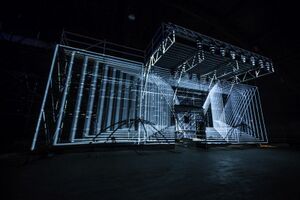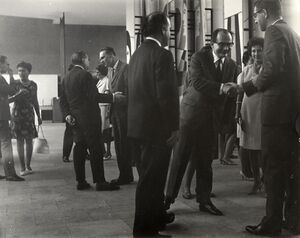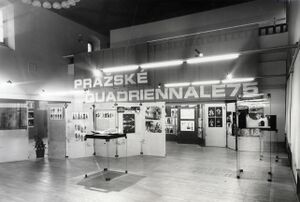The Prague Quadrennial
The Prague Quadrennial of Performance Design and Space (PQ) started in 1967 and has been held every four years since. It is a key international event for professionals in the field of design for performance, scenography, and theatre architecture.
The core of every PQ edition is an international exhibition of countries and regions. From the beginning of PQ until about the turn of the millennium, exhibitions of models, sketches of designs, and performance photographs presenting the international developments in scenography were the central focus. Since 2003, more and more countries have been bringing exhibitions that include performative elements, drawing the viewer into new imaginary spaces, and turning audiences into active participants. The festival that gradually emerged around the main exhibitions from these impulses has grown in size and popularity. Both of these developments opened PQ to other art professions and showed the multidisciplinary nature of performance design/scenography.
The first edition of the Prague Quadrennial, named ‘International Exhibition of Stage Design and Theatre Architecture’, opened on September 22, 1967 in the Brussels Pavilion at the Prague Exhibition Grounds. The overall concept for the PQ was in part inspired by the São Paulo Art Biennial (Q30554), an exhibition of painting, sculpture, and the graphical arts that had been held on a regular basis since 1951, and in 1957 expanded to include scenography as an independent discipline. Czechoslovak scenographers continued to enjoy success in São Paulo and brought home gold medals from every edition between 1959-1965. The catalogue for the first edition of PQ briefly summarises how scenography was approached by both events: Compared to the Biennial of Stage Design in São Paulo, where the artistic aspects are the main criteria for judging the exhibited works – apparently because this particular section was only subsequently included within the context of the Biennial of Visual Arts – the Prague Quadrennial is led in an effort to capture the specificity of stage design, the inseparability of scenography from the direction and all other components of a dramatic work, and the synthetic nature of this field.
As the organiser of the Prague Quadrennial, The Ministry of Culture charged the Arts and Theatre Institute with the realisation of the event. Invitations to participate in PQ were sent out diplomatically through the Ministry of Foreign Affairs via the countries’ embassies. Given the bureaucratic demands of this official form of communication, information was also disseminated using the network of national centres of the International Theatre Institute (ITI, established in Prague in 1948), making PQ an important cultural event on the UNESCO programme calendar. Additionally, OISTT, the International Organization of Scenographers and Theatre Technicians (which was later expanded to also include theatre architects), was closely linked with PQ – its founding meeting was held in Prague in 1968, one year after the first PQ.
The preparations for the second edition of the PQ were significantly affected by events in August 1968. The occupation of Czechoslovakia by the armies of the Warsaw Pact nations under the baton of the USSR was followed by the reintroduction of a strict totalitarian Communist regime, reflected also in arts and culture. Although the new restrictions also had an impact on the composition of the PQ Committee, fundamental changes in the concept and structure of the PQ were successfully prevented. Artists from several Western European nations were planning a boycott as a protest against the occupation, but thanks to the intervention of ITI and OISTT the boycott was averted. This made it possible for PQ to become one of the very few events where, for the next twenty years, artists from both parts of the divided world could meet in relative freedom.
Nowadays the PQ offers new ways of networking, learning, and knowledge exchange through a wide range of activities, including workshops and masterclasses, performances, discussions and round tables, online educational platforms, and accompanying specialised exhibitions.




